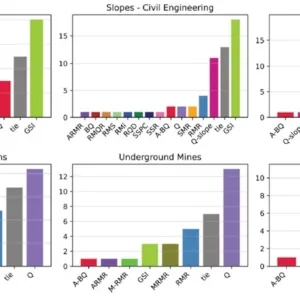The Site Engineers Manual seeks to provide a convenient reference for civil engineers on site, having evolved from an in-house construction manual introduced by the editor, David Doran, as part of a quality management measure in the 1980s when he worked for George Wimpey plc.
The book carries a forward from the former Wimpey chairman, Sir Joseph Dwyer, who is also a past president of the Institution of Civil Engineers. In it he advocates the concept of lifelong learning, citing it as essential to a successful engineer. Dwyer heartily commends the book, which he describes as a “must have for every engineer’s desk or pocket”.
Firm praise indeed, but evolving as it did from a general civil engineering and building contractor’s procedures, is the book a worthwhile investment for a tunnelling site engineer? Well, the answer would have to be ‘yes’. Although not without its drawbacks, the book is indeed a useful reference and has enough common engineering and setting out information, plus materials information that despite not even featuring tunnelling in the index, let alone a discrete section, it is certainly money well spent, especially for a graduate engineer or as part of a company training programme for graduates.
As mentioned, the book is a general volume and tunnelling is only found in the guise of a single page dealing with trenchless excavation, of which the sole tunnelling methodology described is microtunnelling with a paltry three lines. This should not deter prospective readers however as very little of the work allocated to junior site engineers on tunnelling projects is anything other than general engineering and even the tunnel specific work is often just basic civil engineering applied to a tunnelling environment.
The book has a practical rather than showy feel and sketches are used to illustrate concepts clearly. Throughout the book, sample checklists and record sheets are included. One comment is that it would be handy to have these included in a companion CD or link for downloads on the publisher’s website as a useful way of distributing these sample forms and promoting their adoption.
Where the book really excels is in being a first point of call for an engineer on a small to medium sized project where it is usually the case that their brief will be much more wide ranging. Of note are the chapters dealing with formwork, scaffolding, falsework and façade retention; reinforcement; concrete; structural steelwork. From my own experience the information contained within would prove useful, especially contained within a single compact volume.
Less common topics such as mastic asphalt; masonry and timber would appear to be of little relevance, although for mining engineers such as myself, being able to get a brief overview can be useful when they are encountered on a project, as they often will be, just when you have been left in charge usually!
Review by: Patrick Hudd
Price: £50.00
ISBN: 1-870325-24-9
Published by Whittles Publishing






